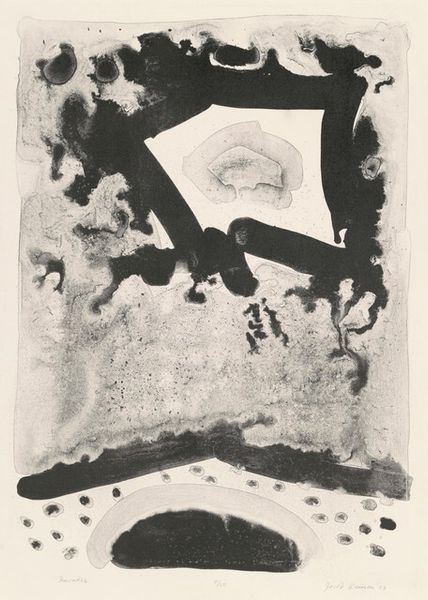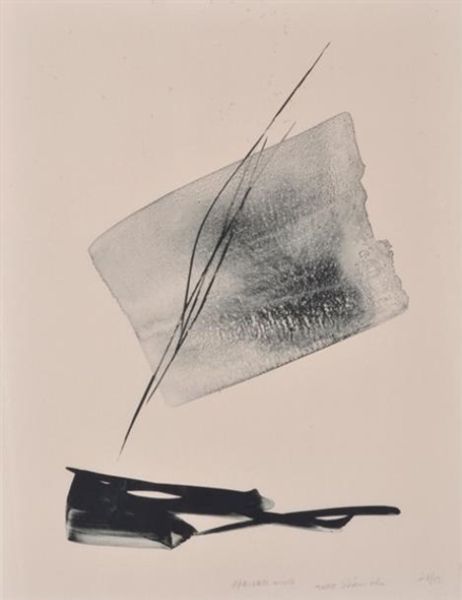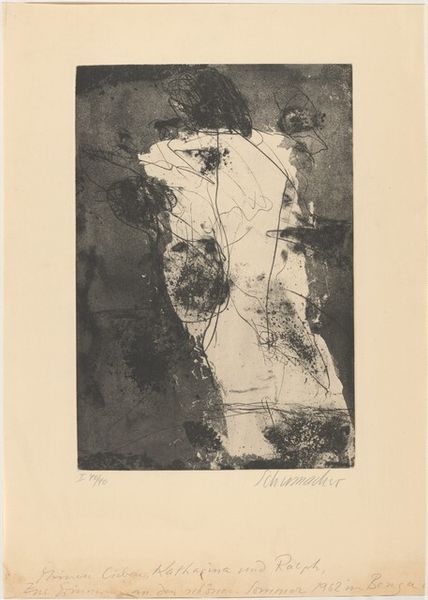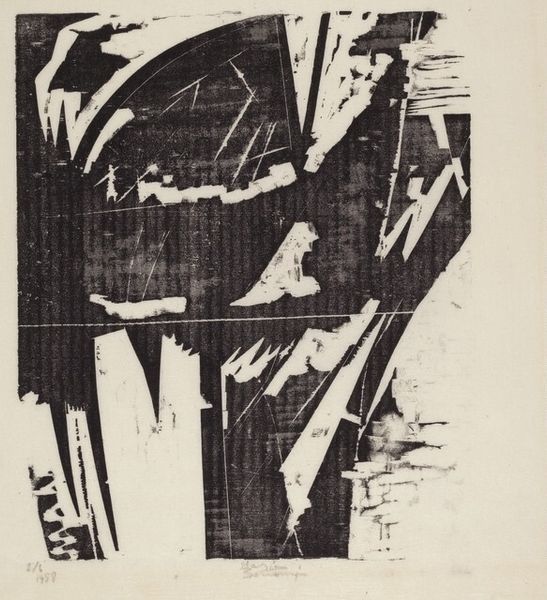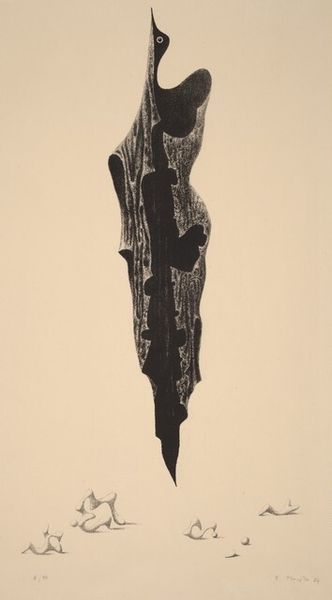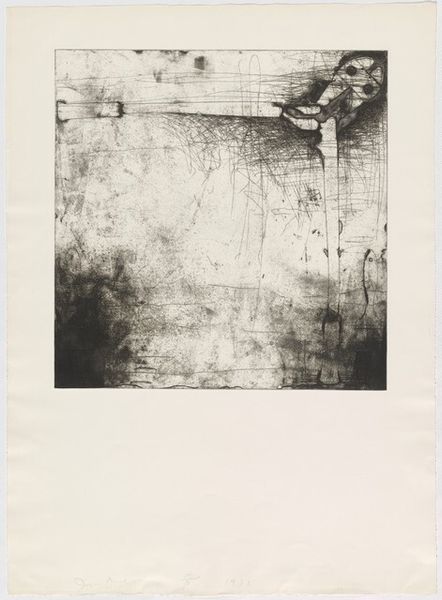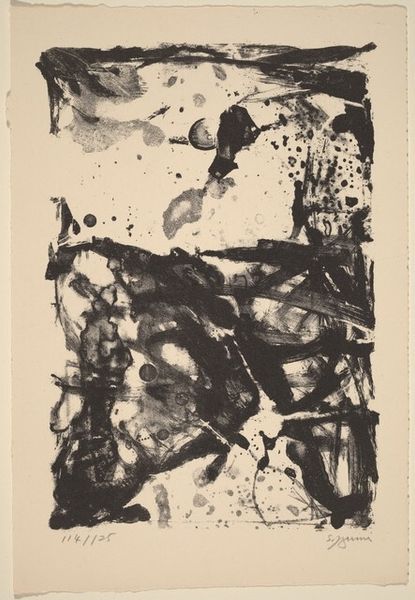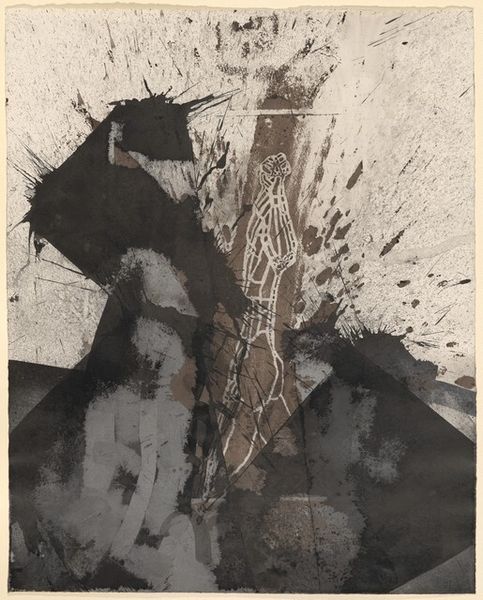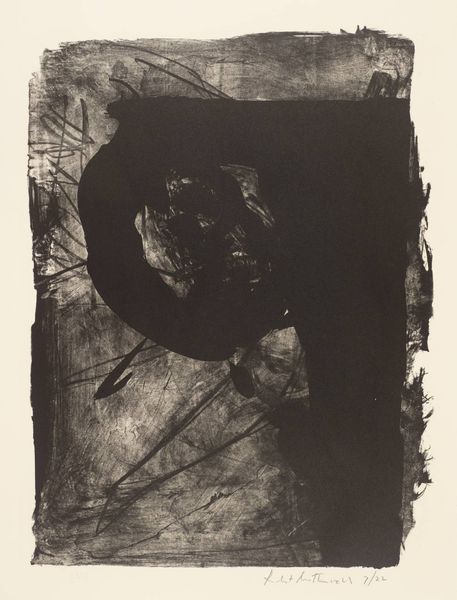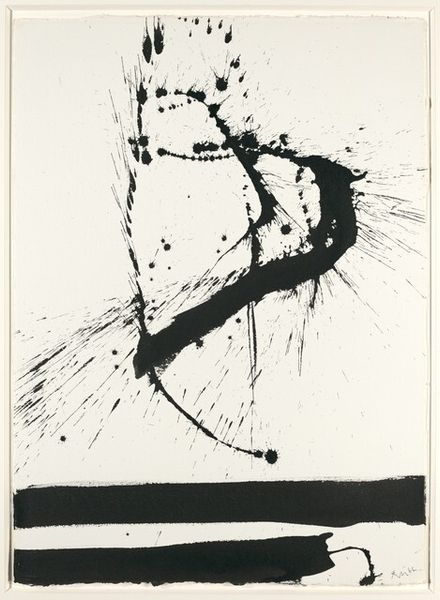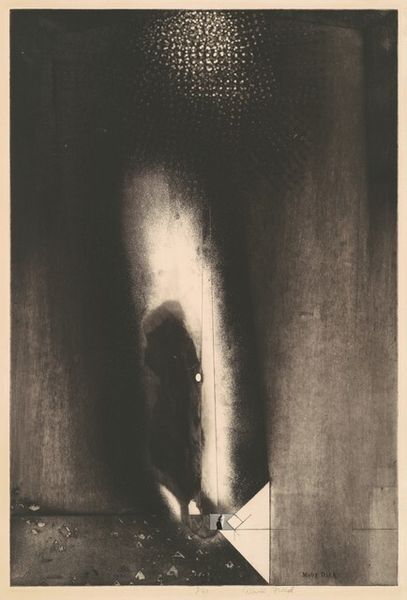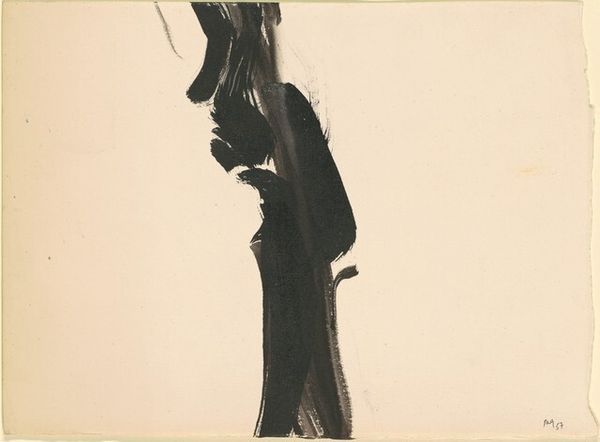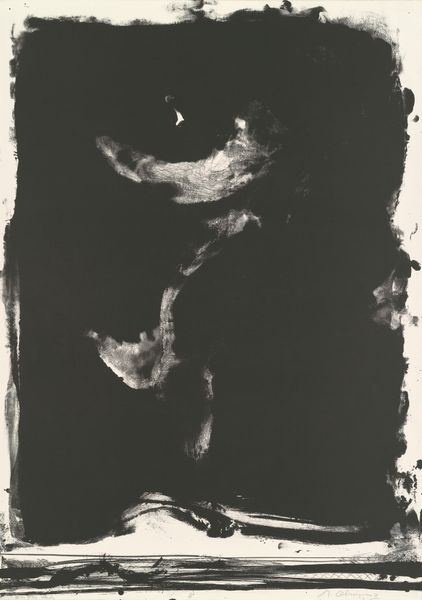
#
abstract-expressionism
# print
#
form
#
surrealism
#
abstraction
#
line
Dimensions: sheet: 71.12 × 51.12 cm (28 × 20 1/8 in.)
Copyright: National Gallery of Art: CC0 1.0
Curator: Here we have Paul Jenkins' "Visitation," created in 1967. The piece immediately strikes me with its starkness. It's as if light and shadow are battling it out on the canvas. Editor: Yes, there’s a certain drama evoked through the binary palette and energetic shapes. Given that this is a print, I am immediately interested in understanding the labor and method utilized to manipulate the ink in this way. Curator: Jenkins was quite fascinated by the themes of transcendence and spiritual encounters. I read it in light of post-war anxieties surrounding spirituality and existence, a push back to traditional patriarchal religion via this fluid sense of an omnipotent, less traditionally defined power. This links into his wider canon, reflecting shifting gender roles during that period, with ideas surrounding feminine and masculine divinity. Editor: That's insightful. Looking closer at the marks, the material evidence points to controlled chance, almost like automatism but refined through the processes. It brings up considerations of craftsmanship in mass-produced objects, challenging hierarchies in art practices by giving an active role to the material. Curator: Do you see how these ambiguous forms hint at figures, almost like ghostly visitations, perhaps questioning social orthodoxies? These are specters haunting the societal conscious after great loss and uncertainty. I see the lines becoming both figures but also fractures in some other type of unseen world. Editor: I see your point. However, I am cautious when we impute too much onto such open ended compositions. To me the visual conversation happening here comes from material and surface that produce forms. It may be more productive to consider them as manifestations of process. It also provokes questions about the reproducibility inherent in printmaking versus unique painterly gestures. The value isn't only representational but about the way material translates concepts. Curator: Indeed. It invites a more nuanced approach to understanding postwar artistic responses, and it really challenges me to reconsider ideas of the modern experience within shifting power paradigms. It creates a beautiful space of collective healing by representing a range of emotions and opinions through the ambiguous abstraction. Editor: Absolutely, engaging with these prints provokes thoughtful reflections on our connection to material culture. The ways in which something can represent absence through physical, manufactured existence and how processes produce certain responses within a person when confronting art.
Comments
No comments
Be the first to comment and join the conversation on the ultimate creative platform.

